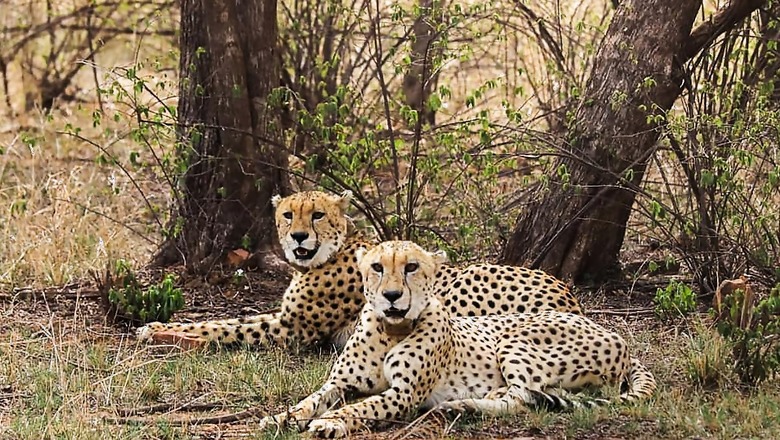
views
The African Cheetahs kept in large enclosures in the Kuno National Park may finally be released into the wild this month after an unusually-long captivity. According to the National Tiger Conservation Authority (NTCA), the felines will be released in a phased manner this October-end.
“The Cheetah Project Steering Committee has taken the decision, and arrangements are being completed. We plan to release the cheetahs in a phased-manner starting this October-end,” said Dr GS Bhardwaj, Member Secretary, National Tiger Conservation Authority (NTCA) on Monday.
The much-awaited release of the cheetahs was earlier pushed back after one of the Namibian cats – the only cheetah in the wild – was found dead in August. Drowning was suspected to be the cause during initial investigation. The rest of the 12 adult cheetahs (five males, seven females) and 12 cubs have remained confined to the enclosures in the Kuno National Park which are anywhere between 50 to 153 hectares large.
The carnivores have remained captive since they were darted and re-captured last July, following successive deaths of three cheetahs allegedly due to septicaemia. All the cubs are captive-born, including the first-born Mukhi which is being hand-raised after being abandoned by its mother.
Meanwhile, the negotiations are also on with African countries to translocate the next batch of cheetahs to India. “We are holding active negotiations with both South Africa and Kenya and plan to airlift more cheetahs by year-end,” added Bharadwaj.
The third batch will be brought to the Gandhi Sagar Wildlife Sanctuary where they will be kept within a fenced area of 64 sq km. All the leopards – competing carnivores which can be a natural threat to cheetahs – are being captured and shifted outside. Although, no direct conflict has been seen or observed between cheetahs and leopards so far at Kuno, according to officials.
Since their translocation in September 2022, and February, 2023, the cheetahs have spent most of the time in ‘semi-wild conditions’ created in the soft-release bomas (enclosures), which have prey, mainly chital along with Nilgai and wild boar. Wildlife experts have raised concerns over the extended captivity of the wild beasts, and repeated immobilisations during the last two years.
Meanwhile, the MP Forest department stated that it has put into use new darting guns and drugs for chemical immobilisation to reduce side-effects of drugs and casualties. “All attempts are made so that no human imprinting is made and cheetahs keep their wild traits. This experience of managing cheetahs in enclosed space without making them lose their wild trait is new and unique,” it stated in its latest report.
The world’s biggest wildlife experiment and multi-crore exercise has entered its third year, and the target is to establish a meta-population of 60-70 cheetahs in the next 25 years.



















Comments
0 comment